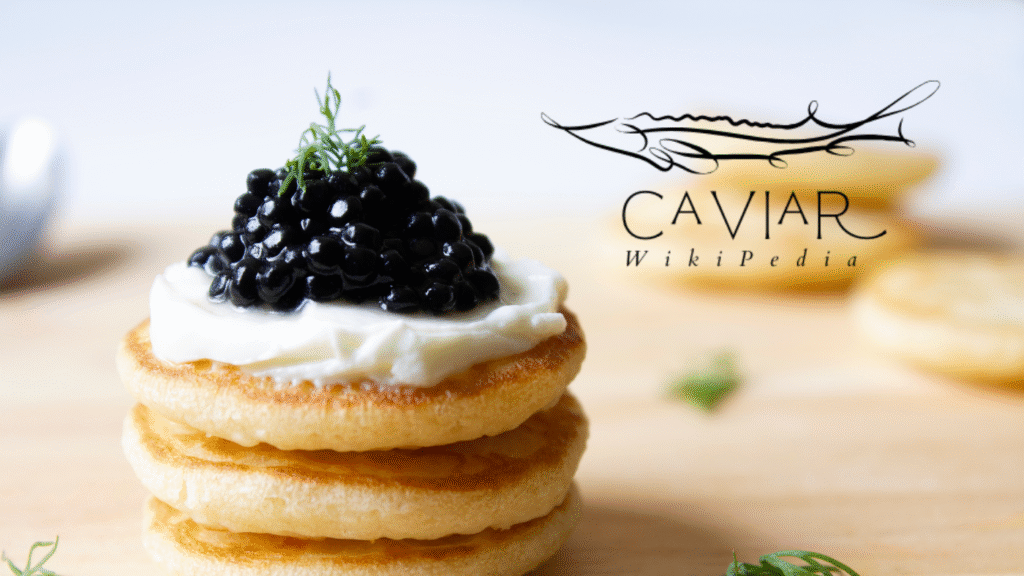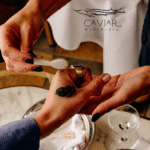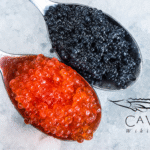Caviar is a special food that many people associate with luxury. It’s made from the salted eggs, or roe, of sturgeon fish. These fish live in places like the Caspian Sea and Black Sea. Caviar is rare, which makes it expensive and prized. Its unique taste and texture make it a favorite for special occasions.
Caviar has a long history. It was mentioned as early as the 4th century B.C. by the philosopher Aristotle. By the 19th century, it became popular among Russian and European royalty.
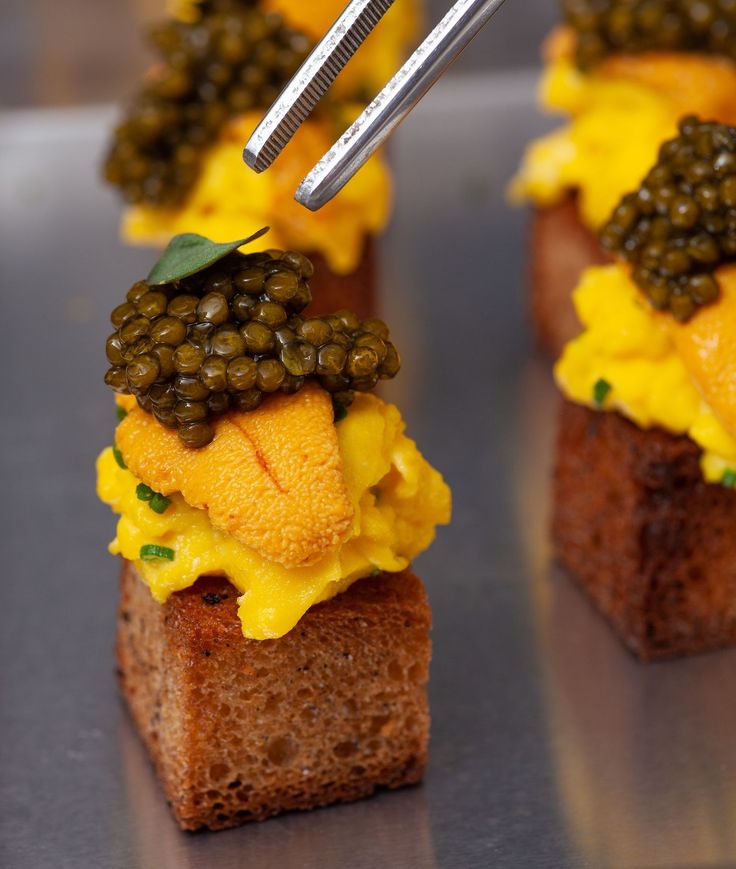
Fishermen used to salt sturgeon eggs to preserve them, and soon, the rich and powerful started to love this delicacy. Today, caviar is enjoyed all over the world, but it’s still seen as a symbol of elegance.
In this guide, we’ll explore the different types of caviar and how to taste them. We’ll also share tips on serving, pairing, and storing caviar. Whether you’re new to caviar or want to learn more, this guide will help you appreciate this amazing food.
What is Caviar?
Caviar is the processed, salted eggs of sturgeon fish. True caviar comes from sturgeon, a type of fish that can live for many years and grow very large. The eggs are carefully harvested, cleaned, and salted to bring out their flavor. This process is what makes caviar so special.
Not all fish eggs are caviar. For example, salmon roe or flying fish roe are sometimes called caviar, but they’re different. Sturgeon caviar has a distinct taste and texture that sets it apart.
Because sturgeon are now endangered due to overfishing, much of today’s caviar comes from farmed fish. This helps protect wild sturgeon and makes caviar more sustainable.
Caviar is often served in small amounts because it’s so rich. A little goes a long way, and it’s meant to be savored slowly. Its flavors can range from buttery to nutty to briny, depending on the type.
A Brief History of Caviar
Caviar has been around for thousands of years. In ancient times, people ate fish eggs as a source of food. By the 16th century, caviar was considered a fine appetizer in Russia.
A writer named François Rabelais called it the best hors d’oeuvre. Back then, Russians ate caviar hot, mixed with onions and pepper, which is different from how we enjoy it today.
In the 19th century, caviar became a luxury food. Russian and Persian nobility loved it, and it spread to Europe. It was served at fancy dinners and became a sign of wealth. However, overfishing hurt sturgeon populations, making caviar even rarer and more expensive.
Today, caviar is produced in many countries, including the United States, China, and Europe. Farms raise sturgeon to produce caviar without harming wild fish. This has made caviar more accessible, but it’s still a treat reserved for special moments.
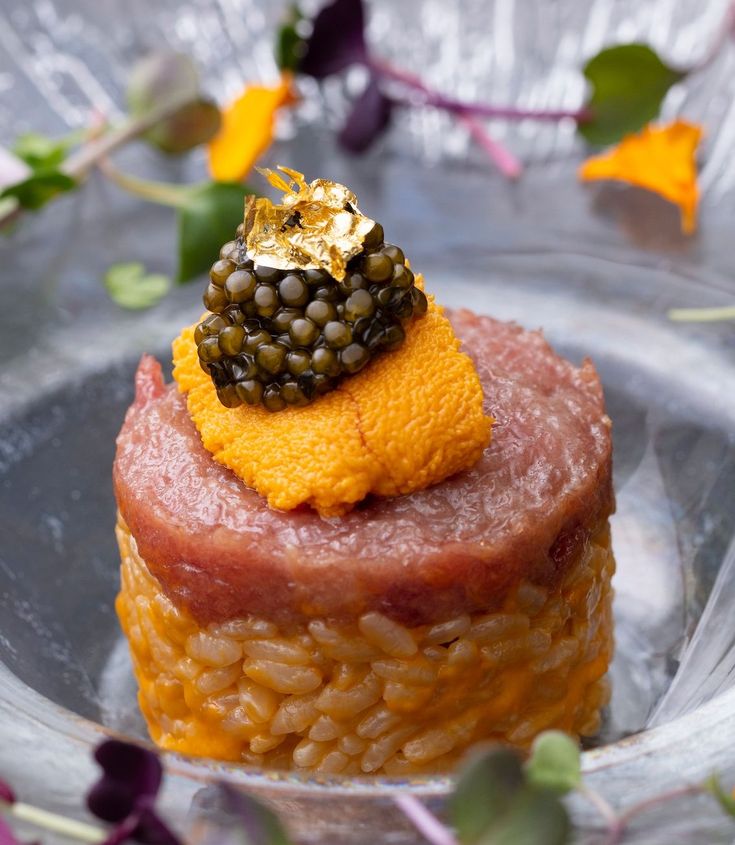
Why Caviar is Prized?
Caviar is special for a few reasons. First, it’s rare. Sturgeon take many years to mature, and harvesting their eggs is a delicate process. Second, caviar has a unique taste. It can be buttery, nutty, or salty, with a texture that pops in your mouth.
Finally, its association with luxury makes it a status symbol. Serving caviar at a party shows sophistication and care for your guests.
Types of Caviar
There are many types of caviar, each with its own look, taste, and texture. Below, we describe the most popular varieties to help you understand their differences.
| Type of Caviar | Appearance | Taste | Texture |
|---|---|---|---|
| Beluga | Large, light grey to black, pearlescent | Rich, buttery, smooth | Creamy, delicate |
| Osetra | Medium-sized, golden to dark brown | Nutty, rich, briny | Firm, complex |
| Sevruga | Small, grey to black | Intense, briny, nutty | Crunchy, bold |
| Kaluga | Large, light to dark brown | Earthy, buttery, salty | Smooth, firm pop |
| Sterlet | Small, light to dark grey | Mild, nutty, buttery | Delicate, refined |
| Hackleback | Small, dark brown to black | Delicate, nutty | Firm, crisp |
Beluga Caviar
Beluga caviar is the most famous and expensive type. It comes from the Beluga sturgeon, which can grow up to 20 feet long and live over 100 years. The eggs are large and light grey with a shiny, pearlescent look.

The taste is rich and buttery, with a smooth, creamy texture. It’s often described as subtle, making it perfect for tasting on its own. Because Beluga sturgeon are rare, this caviar is hard to find and very costly.
Osetra Caviar
Osetra caviar comes from the Osetra sturgeon, found in the Caspian and Black Seas. The eggs are medium-sized and can be golden, brown, or even black. The flavor is nutty and rich, with a touch of saltiness from the sea.
Osetra has a firm texture that feels complex in your mouth. Many people love Osetra because it balances delicate and bold flavors, making it a favorite for caviar fans.
Sevruga Caviar
Sevruga caviar is from the Sevruga sturgeon, a smaller fish. The eggs are small and range from grey to black. The taste is strong and briny, with a nutty undertone. Sevruga has a crunchy texture that makes it stand out.
It’s a good choice if you like intense flavors. Because Sevruga sturgeon produce more eggs, this caviar is often more affordable than Beluga or Osetra.
Kaluga Caviar
Kaluga caviar, sometimes called “river Beluga,” comes from the Kaluga sturgeon in the Amur River. The eggs are large, like Beluga, and range from light to dark brown.
The taste is earthy, buttery, and slightly salty. Kaluga has a smooth texture with a firm pop when you eat it. It’s a sustainable choice because Kaluga sturgeon are often farmed, making it easier to find than Beluga.
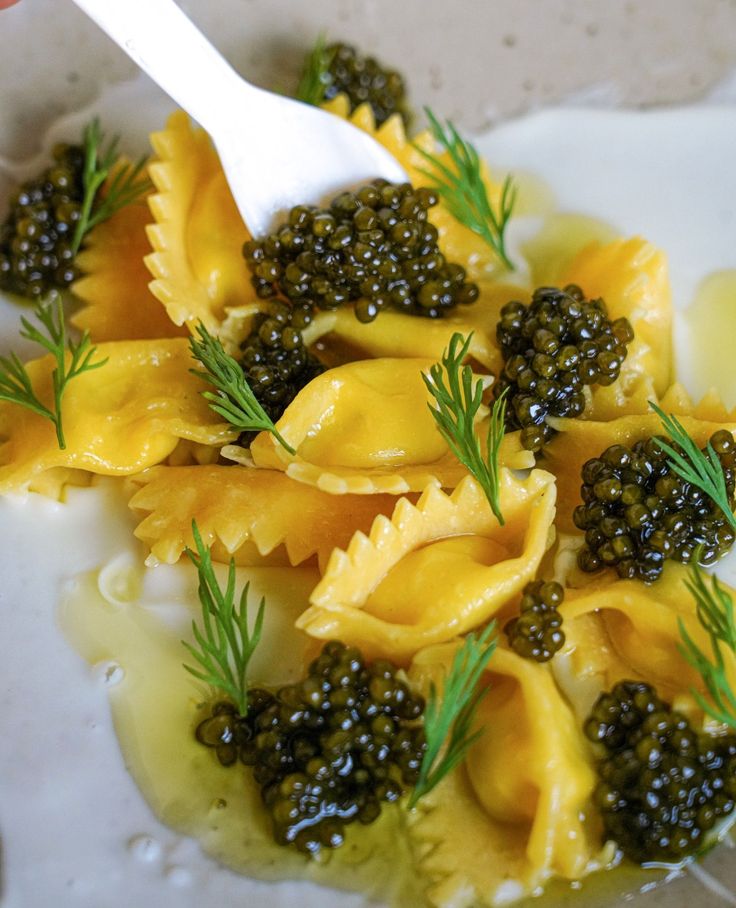
Sterlet Caviar
Sterlet caviar comes from the Sterlet sturgeon, a smaller species. The eggs are small and light to dark grey, with a shiny look. The flavor is mild, nutty, and buttery, with a delicate texture.
Sterlet is sometimes confused with Sevruga because of its size, but it’s less intense. It’s a great option for those new to caviar who want a gentle taste.
Hackleback Caviar
Hackleback caviar is an American variety from the Hackleback sturgeon, found in the Mississippi River. The eggs are small, dark brown to black, and have a smooth, delicate flavor with a nutty punch.
The texture is firm and crisp. Hackleback is more affordable than imported caviar, making it a good choice for beginners or those on a budget.
Other Types
There are other fish roes, like salmon roe or flying fish roe, sometimes called caviar. Salmon roe is red, juicy, and fresh-tasting, often used in sushi.
Flying fish roe, like tobiko, is tiny and colorful, also popular in sushi. While these are delicious, they’re not true caviar because they don’t come from sturgeon. For this guide, we focus on sturgeon caviar to keep things traditional.
How to Taste Caviar?
Tasting caviar is an experience that engages all your senses. To appreciate it fully, follow these steps:
Use the Right Spoon
Always use a mother-of-pearl or plastic spoon for caviar. Metal spoons can change the taste, making it less pure. Mother-of-pearl is traditional and elegant, but a plastic spoon works fine if that’s what you have.
Serve it Chilled
Caviar should be kept cold, ideally on a bed of ice. This keeps it fresh and enhances the flavor. Take it out of the fridge just before serving to maintain the right temperature.
Taste on Your Hand
For the truest flavor, place a small amount of caviar on the back of your hand, between your thumb and index finger. This lets you see the color and feel the temperature. Then, gently place it in your mouth.
Let it Melt
Don’t chew caviar right away. Place it on your tongue and press it against the roof of your mouth. Let the eggs pop naturally to release their flavors. Notice the texture and how the taste changes as it melts.
Order of Tasting
If you’re trying different types, start with the mildest, like Beluga or Osetra. Then move to stronger flavors, like Sevruga. This prevents bold tastes from overpowering your palate early on.
Pay Attention to Flavors
Good caviar can have many flavors, like butter, nuts, or the sea. Take your time to notice these. The aroma should be fresh and oceanic, not fishy. The texture should be firm but delicate, with a satisfying pop.
Serving Caviar
Serving caviar is an art that enhances its enjoyment. Here are some tips:
Portion Size
A typical serving is 15 to 30 grams per person, about one to two teaspoons. This is enough to enjoy the flavor without overwhelming your taste buds. For a tasting party, plan for smaller portions so guests can try multiple types.

Accompaniments
Caviar is traditionally served with blini, which are small pancakes, or toast points. Other garnishes include crème fraîche, chopped hard-boiled eggs, minced onions, or lemon wedges. These add variety, but purists often prefer caviar alone to focus on its taste.
Presentation
Serve caviar in a small bowl or tin on a bed of crushed ice. This keeps it cold and looks elegant. Use a caviar server if you have one, or a chilled glass bowl works too. Offer a variety of accompaniments so guests can mix and match.
Drink Pairings
Caviar pairs well with chilled vodka, which cleanses the palate and enhances the flavor. Champagne or dry white wine is another great choice, adding a festive touch. Keep drinks cold to match the caviar’s temperature.
Buying and Storing Caviar
To enjoy the best caviar, you need to buy and store it properly.
Choosing Quality Caviar
Buy from reputable suppliers to ensure freshness and quality. Look for caviar labeled “malossol,” which means “little salt” in Russian, indicating a high-quality product.
Check the source farmed caviar is often more sustainable than wild. Ask about the sturgeon species and origin to understand what you’re getting.
Storage Tips
Store caviar in the coldest part of your fridge, between 28°F and 32°F. Unopened tins can last up to six weeks, but once opened, eat within a few days for the best flavor. Avoid freezing, as it can ruin the texture. Keep the tin sealed tightly to prevent air exposure, which can spoil the taste.
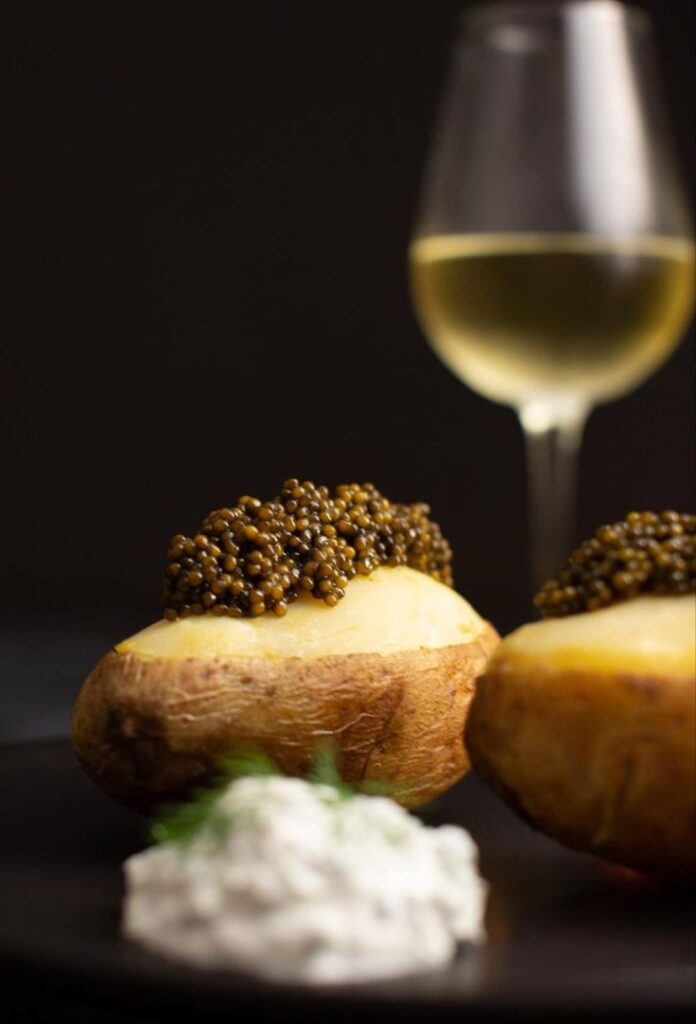
Sustainability
Because wild sturgeon are endangered, choose caviar from farms whenever possible. Countries like the U.S., China, and Europe produce high-quality farmed caviar. This supports conservation efforts and ensures a steady supply.
Caviar Etiquette
Caviar comes with some traditions that add to the experience:
- Take Small Bites: Don’t scoop large amounts. A small spoonful is enough to savor the flavor.
- Don’t Spread It: Caviar isn’t like butter. Place it gently on blini or toast, not smeared.
- Respect the Occasion: Caviar is often served at celebrations. Treat it as a special treat and enjoy the moment.
- Toast with Vodka: In Russian tradition, caviar is paired with vodka and a toast. Raise a glass to good company and good taste.
Fun Facts About Caviar
- Caviar was once so common that it was served in bars like peanuts are today.
- The most expensive caviar is from albino sturgeon, with a golden color and a faint almond taste.
- Caviar is packed with protein, vitamins, and healthy fats, making it nutritious as well as delicious.
- In the past, caviar was eaten hot in Russia, unlike the chilled servings we know now.
Hosting a Caviar Tasting Party
Want to share caviar with friends? Here’s how to host a tasting party:
- Choose Varieties: Offer three to five types, like Beluga, Osetra, and Sevruga. Label each so guests know what they’re trying.
- Set Up a Tasting Station: Place caviar tins on ice with mother-of-pearl spoons. Include blini, toast points, and garnishes.
- Guide the Tasting: Explain how to taste caviar, starting with mild flavors. Encourage guests to compare notes.
- Pair with Drinks: Serve chilled vodka, champagne, or both. Provide water to cleanse the palate between tastes.
- Keep it Fun: Play soft music and create a relaxed vibe. Caviar is about enjoyment, not formality.
Conclusion
Caviar tasting is a journey of flavors and textures. Each type, from the buttery Beluga to the bold Sevruga, offers something unique. By learning how to taste, serve, and store caviar, you can fully appreciate this delicacy.
Whether you’re hosting a party or enjoying a quiet moment, caviar brings a touch of luxury to any occasion. So, take a spoon, try a variety, and discover your favorite caviar today.

